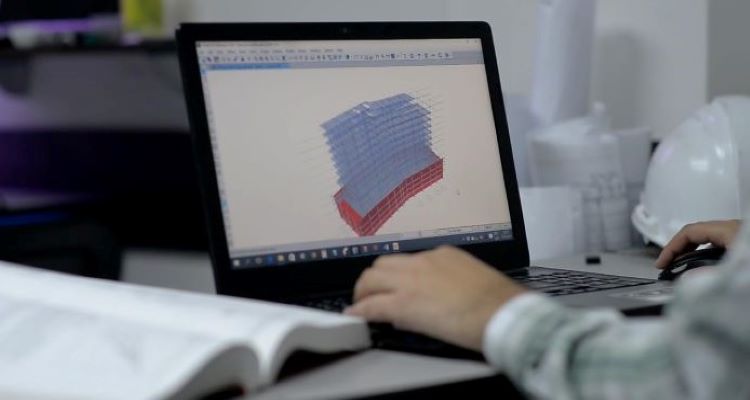Beyond BIM: Upcoming Trends for AEC industry

Building Information Modelling (BIM) technology has played a vital role in transforming the AEC industry digitally. From simplified design technique to collaboration, it has revolutionized the design process enhancing effective & efficient project delivery.
In today’s fast-moving world, nothing is stagnant and continuously evolving for a better change, so does the technology. The AEC industry is evolving persistently with upcoming trends following BIM for greater productivity and optimized performance.
Let us take a look at some of the upcoming trends for the AEC industry post-BIM in the near future and discuss them in brief.
1. Augmented Reality (AR)/ Virtual Reality (VR):
These immersive technologies can be utilized to supersede traditional walkthroughs for improving collaboration and speedy, yet, accurate decision making enabling faster project delivery as well as making it aesthetically pleasing for clients.2. Drones:
Drones Technology in conjunction with BIM proves to be valuable throughout the project lifecycle and play a vital role in enabling the AEC industry to deliver massive & complex projects efficiently & effectively with multiple advantages thereby, improving safety.3. 3D Printing & Additive Manufacturing (AM):
These convincing advancements enable you to cut waste to almost zero and save time and cost allowing you to print the building/project components there and then on-site. The 3D printing can also be done for unusual organic designs. The 3D printable concrete, aka self-healing concrete, is one of the prime factors for the dawn of AM. It not only aids in parametric designs & rapid prototyping but also sustainability due to its environment-friendly feature.
A quick update: L&T Construction, the construction arm of Larsen & Toubro, has recently 3D printed a ground plus one 700-sq-ft house with reinforcement for the first time in India at Kanchipuram.
Read more at:
L&T Construction prints house at Kanchipuram, first ever in India
4. Mobile & Cloud Technologies/Collaboration: IM and the Cloud is one of the robust combos facilitating real-time collaboration & seamless communication amongst the stakeholders & project team. Cloud Technology helps to store large amounts of data secured in a remote location making it accessible for project managers & other team members by the means of devices laptops, desktops, tablets, or mobiles concurrently over an internet connection. The outbreak of the Covid-19 pandemic has helped everyone realize the utmost advantages of mobile & cloud collaboration, thus, making it more popular and widely accepted.
5. Internet of Things (IoT):
IoT has gained remarkable significance in the AEC industry and transformed traditional project processes in a better and smarter way. IoT involves the use of smart devices and sensors which share a large amount of data with each other through the internet allowing smarter, safer, and efficient practices. Some of the IoT examples include Automatic adjustment of light brightness, the temperature of AC getting adjusted as per the weather conditions, reminders for servicing of home appliances, intelligent ventilation, etc. IoT has its own benefits like predictive maintenance, increased productivity, facility management, sustainable projects, safety and security, and many more.6. BIG Data:
There’s been a lot of hype around BIG Data these days. BIG data, as the name suggests, refers to the use of large amounts of data that can be analyzed and executed reasonably. The data-rich BIM model can be utilized to deliver data for the project components. This data is pulled up from IoT, internet searches, social media, digital photos, etc. BIG data proves valuable for optimizing business processes by monitoring time and construction activities, enhanced facility management, reducing project risks & making informed decisions.7. Artificial Intelligence (AI):
The implementation of AI is becoming more popular these days. AI is the intelligence of a machine to behave and function in human-like way. The BIM software consists of extensive data that AI utilizes to study considering minute aspects of the project to discover the best possible resolution quicker than a human. Some of the advantages of AI include Risk mitigation, automation, non-liable to human errors, greater efficiency, etc.8. Robotics:
The construction industry being a labor-intensive industry involves manual human efforts. These efforts can be substituted by Robots programmed to perform such activities. Undoubtedly, the outcome of the Robot’s performance would be precise and accurate cutting down the time. Some examples of Robotics include Robots building walls by bricklaying or Robots helping in reinforcements, Robots involved in surveillance activities, etc.
Efficiency, reduced risks and safety concerns, timesaving, better quality, consistency are some of the benefits of leveraging Robotic technology.
We can infer from the above that BIM is continuously evolving leading to the advent of new technologies and trends for the betterment. It is not necessary that we adopt or embrace all these trends concurrently, rather, identifying the areas of concern as well as analysis of which technology can befit one’s business needs & requirements could be beneficial in determining the adoption of apt technology for our projects.
However, staying abreast of new trends in BIM and AEC industry along with early, and yet, prudent adoption is essential and the best choice to stay ahead of the competition.
-BIM will make it easy!!
+ Post an article




















